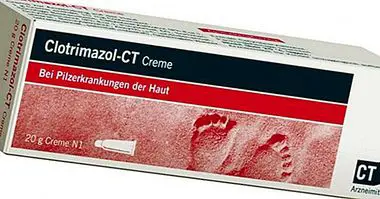Olanzapine: operation and effects of this psychopharmaceutical
Schizophrenia and other similar psychotic disorders are old names for psychology and medicine. Different researchers have proposed different ways of understanding this type of disorders, which generate a deep suffering in the person who suffers and in their environment, as well as looking for different ways to treat them.
Since psychopharmacology have been used different types of substances in order to deal with this problem and the symptoms that show those who suffer: antipsychotics or neuroleptics. One of these psychotropic drugs is olanzapine .
- Related article: "Psychotropic drugs: drugs that act on the brain"
Psychotic disorders and dopamine
The so-called psychotic disorders are a group of mental disorders in which strange and implausible perceptions and ideas appear and which usually lead to a certain loss of contact with reality.
Within this type of disorders, among which schizophrenia stands out , there are both symptoms that add elements to the behavior of the individual or positive symptoms (hallucinations being the hallmark) and those that cause a decrease in the individual's abilities (such as cognitive impairment or alogy) or negative symptoms
At a neuropsychological level it is observed that the presence of symptoms of this type are usually linked to problems in the synthesis and uptake of the neurotransmitter known as dopamine. Positive symptoms are associated with an excess of dopaminergic activity in the mesolimbic pathway, while negative symptoms tend to be linked to the presence of Deficit or absence of dopamine in the mesocortical way .
In this regard, efforts have been made to search for substances and active substances that can produce a change in the synthesis and reuptake of dopamine in these areas.
Brief history of neuroleptics
Throughout history, numerous substances and compounds have been found and investigated whose active ingredients allow a reduction of the psychotic symptoms present in schizophrenia and other similar disorders.
The first substances of this type were found by chance, but they were a great advantage for patients with this disorder to allow their treatment. It is the classic or typical neuroleptics. Its main mechanism of action is on the dopamine D2 receptor, which blocks indiscriminately throughout the brain.
This causes that, by decreasing the level of dopamine in the mesolimbic pathway, Positive symptoms such as hallucinations decrease to a large degree. However, by acting throughout the brain and not only in this way easily generate different side effects, and do not have a therapeutic effect on negative symptoms. In fact, by further decreasing the level of dopamine in the mesocortical pathway they can get worse.
The little effectiveness in the negative symptoms and the presence of side effects which can be severe led to further research to obtain safer and more effective substances. This research resulted in the creation of atypical antipsychotics or neuroleptics. And within this group, we can find olanzapine.
- Related article: "Types of antipsychotics (or neuroleptics)"
Olanzapine as an atypical neuroleptic
Olanzapine is one of the main atypical neuroleptics, substances used to reduce the symptoms of schizophrenia and other psychotic disorders. It is a substance derived from dibenzothiazepines, which is marketed in the form of tablets and tablets.
As an atypical neuroleptic, The main mechanism of action of olanzapine it is based on the blockade of the D2 receptors of dopamine, but on this occasion an antiserotoninergic effect is also produced.
By having serotonin an inhibitory effect in the synthesis and emission of dopamine, the fact of introducing a component that limits the emission of the first causes the general levels of dopamine to remain stable in most nerve pathways. In this way, although it still has a great effect on the mesolimbic pathway that allows to combat the positive symptoms of schizophrenia, it does not generate a destabilization of other pathways.
In addition, the fact that in the bark there are large number of serotonergic receptors causes that, by limiting its performance, the level of dopamine in the mesocortical route increases, which also allows to combat part of the negative symptoms.
In this way, olanzapine and other similar substances allow the positive and negative symptoms of schizophrenia to be combated in an efficient and safer manner than that of classical antipsychotics, generating fewer secondary symptoms and being of lesser severity.
In what disorders is it used?
The main use of Olanzapine is in the treatment of disorders of psychotic type and especially in that of schizophrenia. However, the properties of this substance have made it valid for the treatment of other psychic problems.
Specifically, it is used to combat manic episodes in bipolar disorder. It has also been used occasionally in some cases of borderline personality disorder.
- Related article: "The 6 types of schizophrenia and associated characteristics"
Side effects and contraindications of olanzapine
Like all drugs, olanzapine can generate various Side effects of variable intensity and may be contraindicated in some cases.
One of the most frequent secondary symptoms caused by this substance are the increase of appetite and weight . It can also cause hyperglycemia, increased triglyceride levels and even diabetes, or greatly harm those who suffer from them if the doses are not controlled and followed up.
It is also very common for olanzapine to generate a certain level of drowsiness or sedation, as well as excessive salivation, tachycardia (which is why it is not recommended in patients with heart problems), hypotension, muscle weakness and dizziness . Nausea and vomiting are also a possible side effect, as well as constipation. Finally, it can also generate a decrease in libido and erectile capacity.
Other symptoms not so usual are the presence of tardive dyskinesia (uncontrolled movements of mouth and tongue.) Fever, allergy, epileptic seizures, changes in visual perception or inflammation of body parts may also occur.
It is also contraindicated in patients who have suffered cerebral infarcts or in the process of dementia. Diabetic patients with liver, pancreas or heart problems should not consume this antipsychotic. In the case of pregnant women olanzapine can cause problems in the fetus , so that the doctor should be consulted about possible alternatives or ways to proceed.
Bibliographic references:
- Gómez, M. (2012). Psychobiology CEDE Preparation Manual PIR.12. CEDE: Madrid.
- Salazar, M .; Peralta, C .; Pastor, J. (2006). Manual of Psychopharmacology. Madrid, Panamericana Medical Publishing House.



















